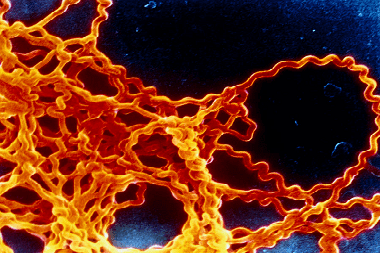Infectious diseases >>>> Signs of leptospirosis in humans
Signs of leptospirosis in humans.

Leptospirosis is one of the most common parasitic zoonotic infections. Animals (rodents, livestock) become infected through feed or water. A person acquires an infection through contact with contaminated meat, dairy products, water, soil. Regardless of how the infection entered the body, leptospira with blood is carried to various organs. The walls of capillaries, kidneys, liver, spleen are especially affected by leptospirosis. Reproducing in the affected organs and spreading again through the bloodstream, leptospira can lead to massive seeding of the whole organism.

The most dangerous property of leptospira is considered their ability to destroy blood cells - erythrocytes, as well as increase blood clotting, which, in combination, threatens the development of thrombosis and hemorrhage.
Leptospirosis, in addition to structural changes in the properties of blood, becomes the cause of general intoxication of the body and destructive changes in the affected organs. This is reflected in the clinical signs of leptospirosis.
Signs of leptospirosis are polymorphic:
- Headache,
- Nausea,
- Muscle pain,
- Muscle stiffness in the occipital region,
- Stool disorder,
- Dehydration,
- Swelling of tissues,
- Hemorrhagic rash,
- Exanthema,
- Inflammation of the mucous membrane of the soft palate, pharynx,
- Enlargement of the submandibular lymph nodes,
- If the liver is damaged, there are signs of hepatitis (jaundice),
- With kidney damage, the volume of urine decreases.
Treatment of leptospirosis is based on antibiotic therapy according to the identified strain of the causative agent of leptospirosis. Along with drug therapy, detoxification measures are carried out, and symptomatic treatment (blood transfusion, taking diuretics, hemodialysis). Throughout the treatment, a fat-free diet is followed to relieve the work of the liver and pancreas.

Read

Read



























